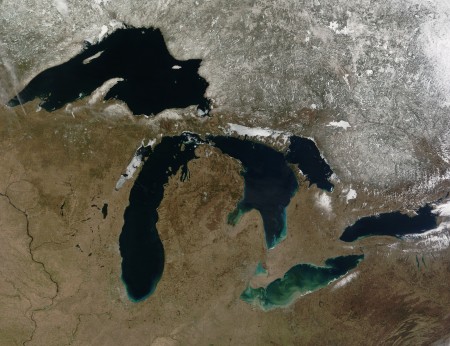December 2, 2015 – A new private sector initiative, the Business Alliance for Water and Climate Change (BAFW) is being launched in Paris today. It calls for companies to commit to measure and minimize water risks. BAFW will work with the United Nations and World Business Council for Sustainable Development on climate change and freshwater challenges and spread the word to non-member companies. The goal is to get the global business community working in tandem on freshwater stewardship.
This week The Globe and Mail has been running a series of articles under the collective name, Headwaters, reporting on the current state of freshwater on the planet and in particular in Canada, the least likely nation to face freshwater shortages. Mark Hume opens the series of articles with the following comment, “Canadians, unlike billions of people around the world, see clean water as their birthright.” No truer a statement can be made. My country features 8,500 rivers and 2 million lakes. Not even Russia is so blessed by the freshwater abundance found in Canada.
More locally, Toronto, where I live, sits on the shores of Lake Ontario, one of five Great Lakes that contain more than 20% of the world’s surface freshwater spread over 244,000 square kilometers (94,000 square miles). Canada shares the Great Lakes with the United States and what should be a coveted water resource has largely been neglected.
For much of the 20th century the lakes have been the wastewater dumping destination for effluent coming from cities, industries and rural farms on both sides of the border. Only in the last 3 decades has there been a concerted effort by the bordering states and province to reverse centuries of damage. An International Joint Commission is doing hard science studying wastewater composition, lake chemistry and the complex ecosystems and biodiversity of the lakes. There are old challenges like dioxin and benzene pollution. More recent challenges include pharmaceuticals and antibiotic contamination, and the most recent, cosmetic microbeads and nano particles. Overall, the verdict for the lakes remains not yet determined with global warming adding to the challenges as scientists see not just warming air but also warming surface water temperatures.
But Canada’s freshwater problems are minuscule when compared to the larger global scene. At COP 21 freshwater is a major topic of discussion. In briefing notes prepared for the BAFW conference the global freshwater crisis and climate change are linked by:
- declining snow-packs and mountain glaciers
- increasing evapo-transpiration rates
- rising sea levels and saltwater intrusion into coastal aquifers
- changing precipitation patterns
- warming of surface water leading to increased algal and bacterial blooms
- increasing frequency of extreme weather events leading to erosion of river courses and lake shorelines and the washing of sediments and pollutants from land to waterways
In the briefing notes it states water-related climate change impacts affect “the capacity and reliability of water supply infrastructure. Climate change will impair non-consumptive water uses, including freight transport, tourism, and fisheries on inland waterways.”
Based on 2040 projections high freshwater stress is expected to impact 33 countries including the United States, China, India and 14 Middle Eastern nations. Irrigation freshwater demand alone is forecast to increase by as much as 20%. And in areas already freshwater stressed like the Colorado River basin, the forecast includes population migration as the demographic shift from Northeast to California, Arizona, Nevada and New Mexico reverses because of the lack of water. So the newly minted members of BAFW at COP 21 have lots to talk about.
Here are just a few of the anticipated items they will need to address in the coming decades:
- Reductions or disruptions in water supply increasing costs and overall impacting water-intensive manufacturing operations, raw material supply, intermediate supply chain, and product use.
- Water scarcity impacting power generation, limiting the availability of hydropower and affecting power that run steam turbines or water-based cooling systems.
- Polluted source water impacting industrial processes and the health of work force, causing increasing medical and operational costs, and increasing expenditures on pre-treatment of water sources.
- Governments applying industry usage caps and reallocation regulation in light of increasing scarcity, and in some cases forcing water intensive businesses to suspend operations.
- Negative reputation impacts on water intensive business in conflict with communities and citizens over a declining resource.
BAFW members in establishing new policy and practices to manage and mitigate climate risk should lead by example:
- performing internal water and climate risk assessments and developing operational long-term energy and freshwater usage plans.
- creating new manufacturing and supply chain practices to address water capacity and mitigate attendant risk.
- communicating with government, stakeholders and consumers about climate adaptation and mitigation plans and seeking feedback from all.
- building industry-wide responses and strategies to address gaps in knowledge and build collective adaptation and freshwater usage expertise.


















